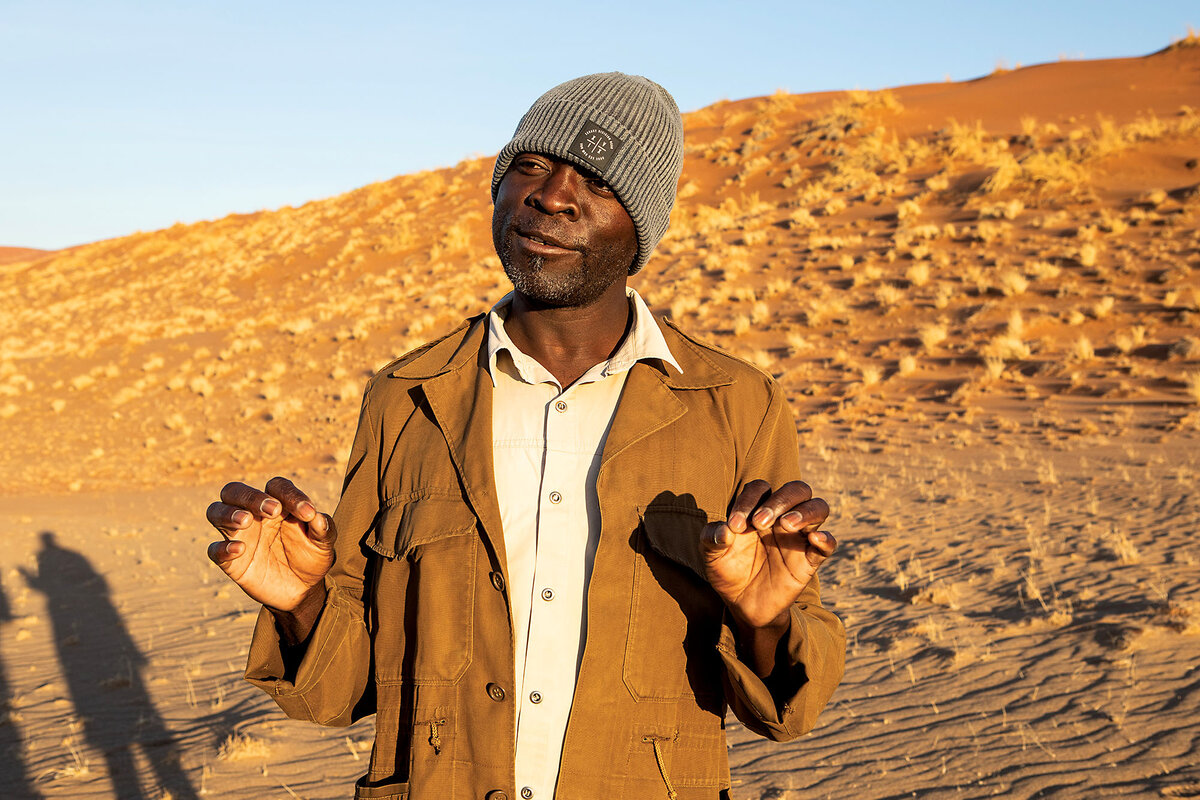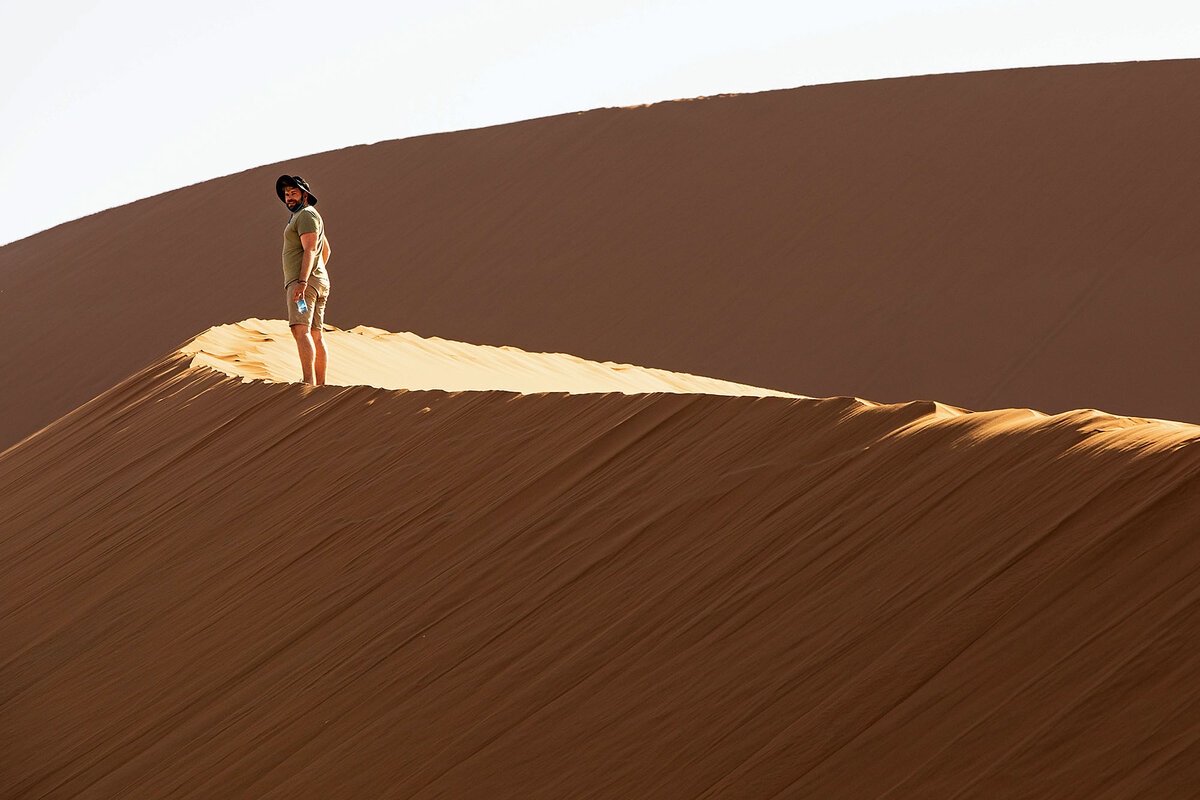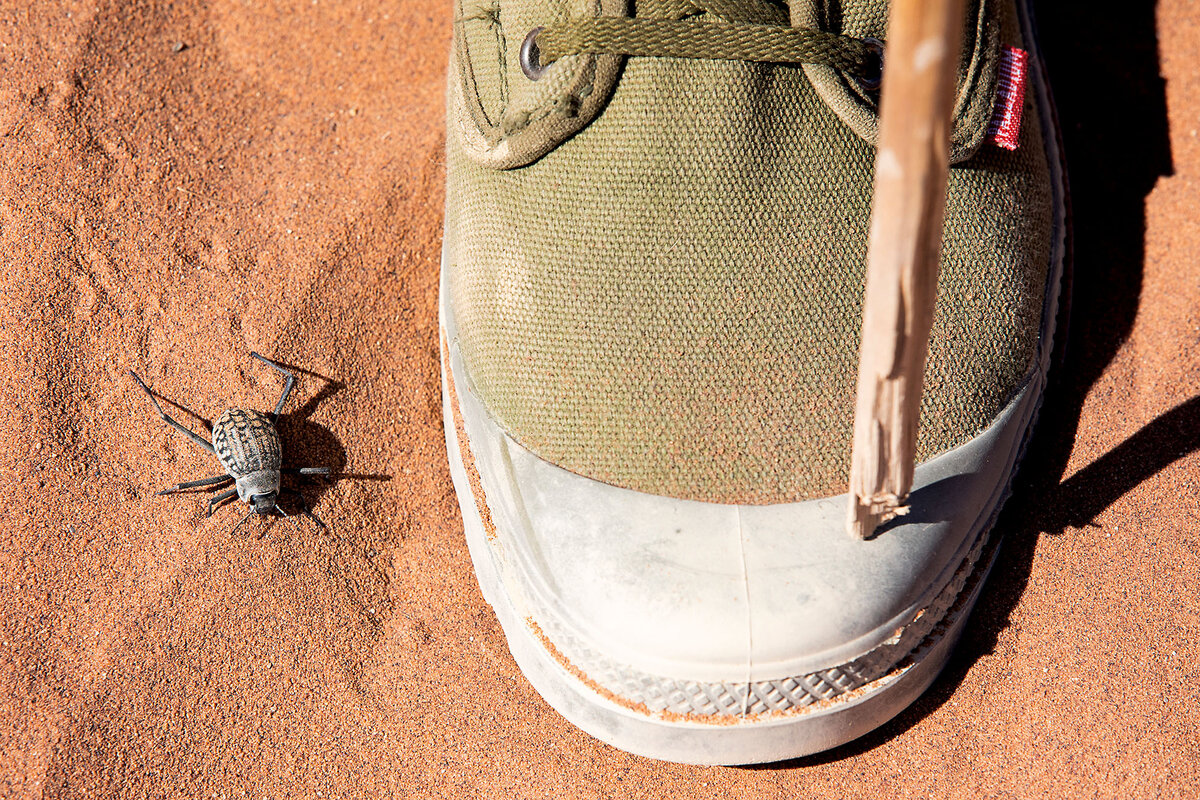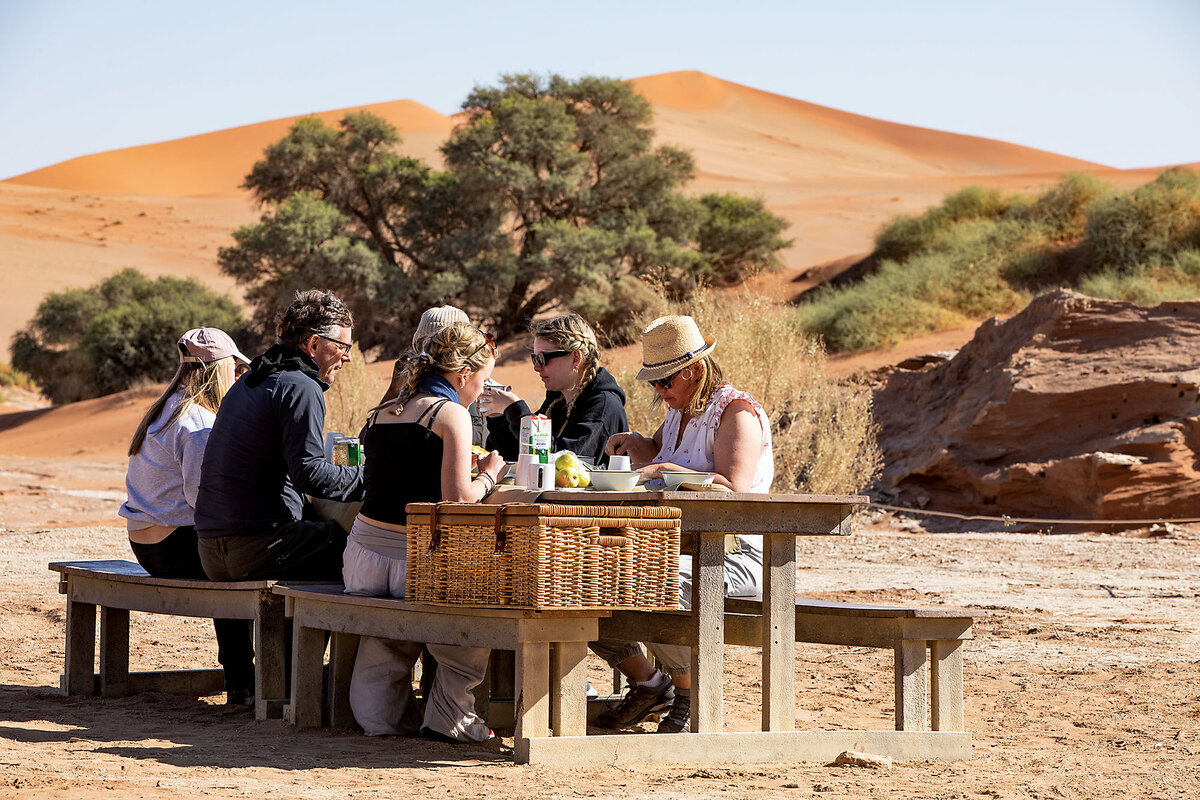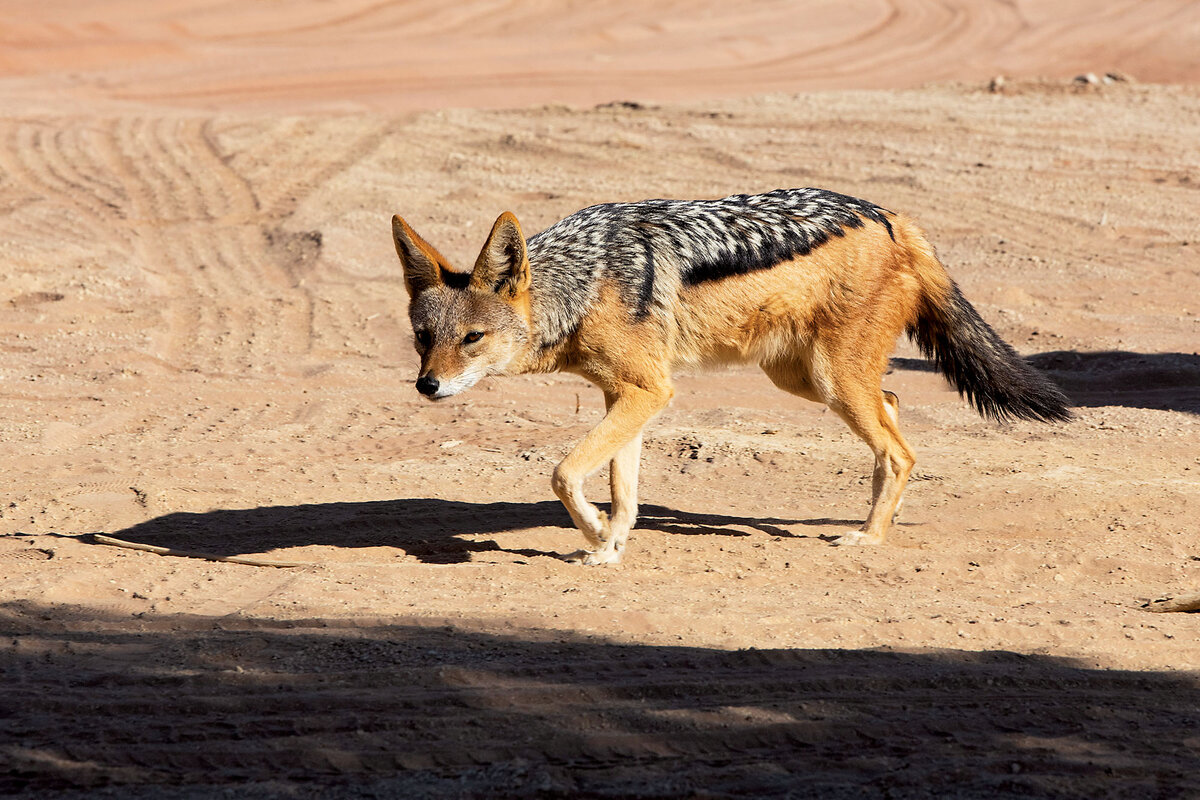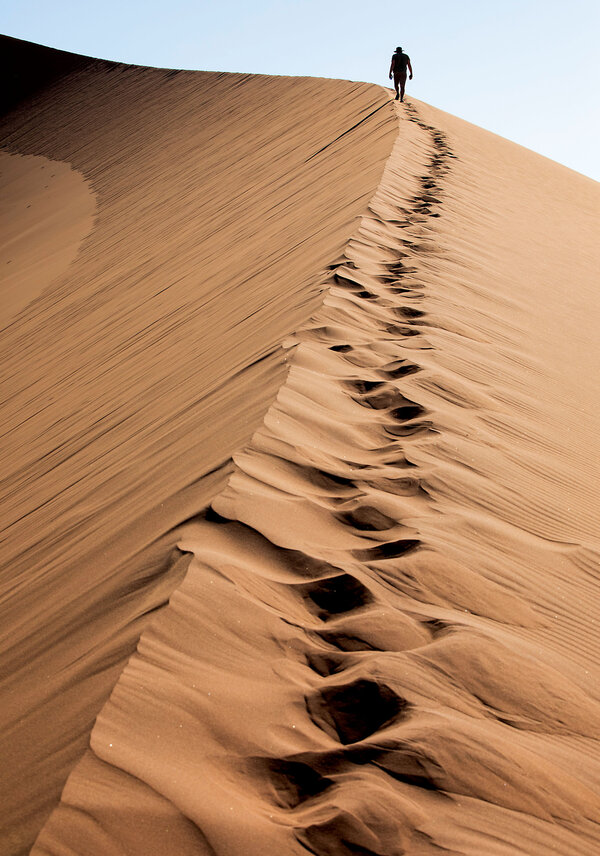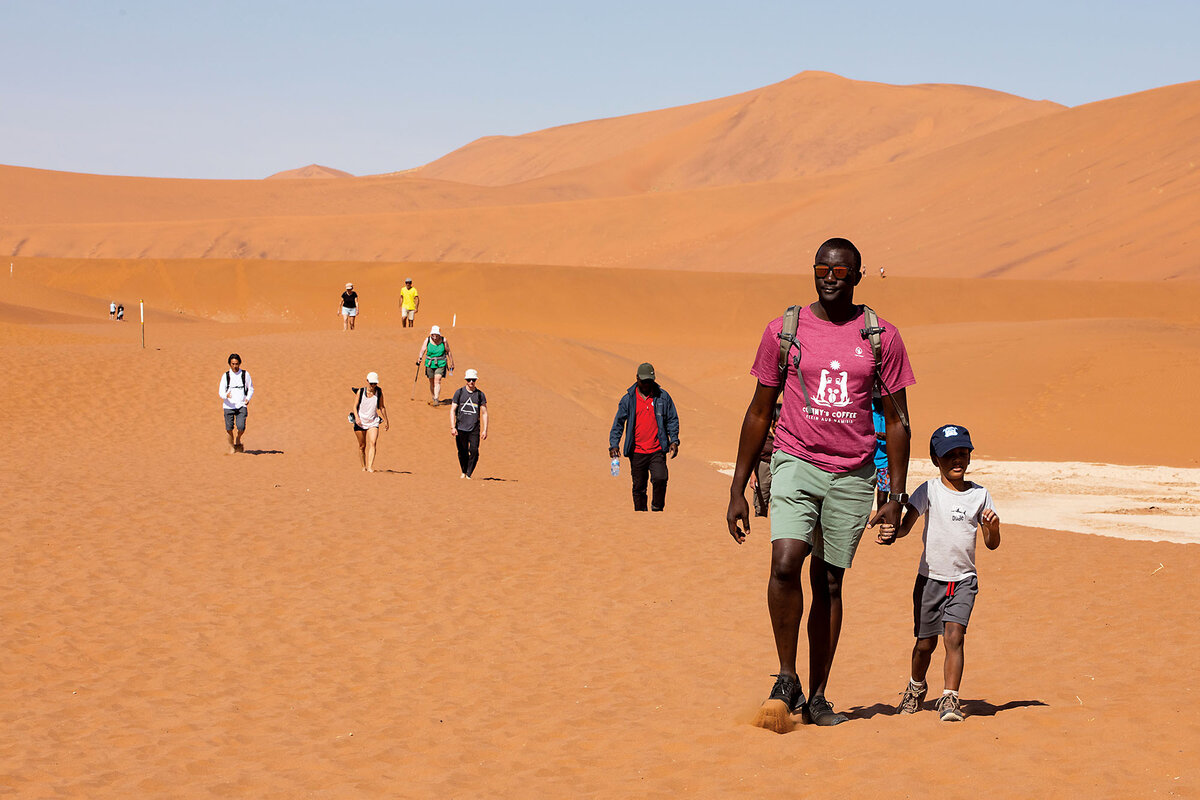This Namibian park has skyscraper-high dunes and a spectacular view of dawn
Loading...
| NAMIB-NAUKLUFT NATIONAL PARK, NAMIBIA
Our guide through the sands is maddening, at first.
His name is Kasiki Sigberth Kanyanga, and he says to call him Siggy. Just before sunrise, Siggy is leading us on a bus tour through the Namib-Naukluft National Park in Namibia. Like the busloads of tourists whizzing past us, we are impatient to get to the base of the dunes. If we are early enough, there will be breathtaking views of impossibly high mounds of sand set against the breaking day.
We want to hurry. We want to catch sight of the tallest dune, Big Daddy, which at 325 meters (1,066 feet) is supposed to soar as high as a skyscraper. There’s also one called Big Mama. How tall is that one? we wonder.
Why We Wrote This
The big dunes – and the views they offer – are often the stars in this Namibian national park. But dawn here is breathtaking from any vantage point.
But no. Siggy pulls us over to the side of the road. Instead of up, he wants us to look down – at spider, beetle, and termite tracks.
Light frustration builds. We think Siggy is stalling because he forgot to bring the coffee that he had promised for our breakfast later in the morning. And yet he is so passionate about what he’s pointing out, and his smile so endearing, that we, too, begin to get excited.
While the sun comes up, we begin to realize there was never any need to rush. In this national park (one of Africa’s vastest) and in this desert (which is said to be the world’s oldest), there is simply no reason to hurry. The dawn of a new day is spectacular in this place no matter what you are doing: looking up at a dune the height of a high-rise, or studying insect trails on the sandy horizon.
As our tour is ending, we hear Siggy cry out to no one in particular, “Oh no! Oh no!” And then comes his relief: “He’s alive.”
“Who is alive, Siggy?” I ask.
He points to a beetle he has scooped up in his hand. It was confirmation: Siggy’s techniques weren’t stalling, after all. In a country of elephants, oryxes, and giraffes, which loom so large in tourists’ minds, Siggy is in love with the smallest of beings.
And as for the coffee? A half-hour into the tour, a colleague of Siggy’s had arrived with a thermos. Siggy – and the coffee – made for an unforgettable breakfast in the dunes.





